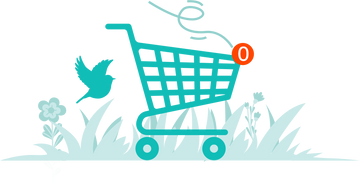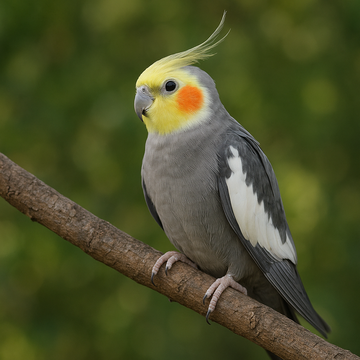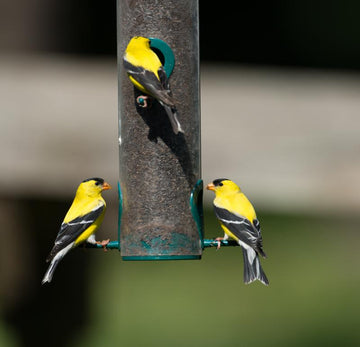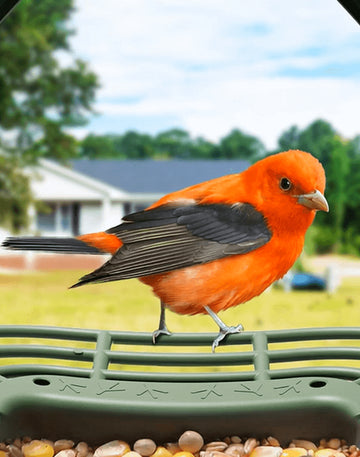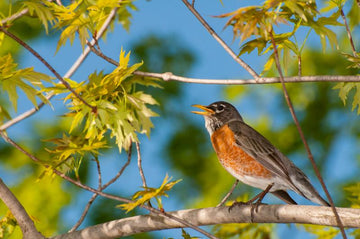Spring Bird Feeding Tips for Beginners and Bird Lovers
For backyard bird enthusiasts, spring offers an excellent opportunity to support local bird populations and enjoy the lively activity at feeders. Following a few practical spring bird feeding tips can help you create a safe, attractive, and nutrient-rich environment for your feathered visitors.
Best Bird Foods to Offer in Spring
When spring rolls around, you might wonder what tasty treats you can put out to attract birds to your yard. Here is where to start.
Seeds and Grains
You can't go wrong with sunflower seeds! They're like candy to many birds. Cardinals, finches, chickadees, and sparrows all love them. If you want to be extra nice go for black oil sunflower seeds. They're packed with fat, which gives birds lots of energy, because they have thinner shells than striped sunflower seeds, so even little birds can crack them open without too much trouble. White-striped sunflower seeds have the most durable shell and the lowest percentage of fat.

Suet and Protein-Rich Foods
Spring is baby season for birds! They're busy building nests and feeding their little ones, so they really need protein. Suet cakes are a great way to provide that protein. You can also put out mealworms and chopped peanuts. These foods give birds the energy they need to keep up with the demands of raising a family. Woodpeckers, nuthatches, and bluebirds will especially appreciate these protein-packed goodies.
If you want an easy way to offer insects to your birds, add them to your suet cake mix.
Fresh Fruits
Don't forget fresh fruit! Things like berries (strawberries, blueberries, raspberries), chopped apples, and grapes can bring in orioles, thrushes, and tanagers. These fruits are really similar to what birds find in nature during the spring, and they're good for their digestive systems too. Make sure to only offer fresh cut fruits that you cut. Do not offer canned fruits or high sugar count processed fruits.
Common Spring Birds and Their Favorite Foods
Bird Feeder Setup Tips in Spring
Spring helps birds who are nesting, or returning. Here are some easy tips to make your yard a bird paradise:
Where to Put Your Feeders
Safety First: Birds need to feel safe from predators when they eat. Put your feeders in spots that are quiet and out of the way. Near bushes or trees is ideal to give them a quick place to hide if they feel scared.
Window Alert: Try not to put feeders too close to windows. Birds may accidentally fly into the glass, thinking they can fly through.
Squirrel Proof: If you have squirrels nearby, you might put a baffle around the feeder.

Choose the Right Bird Feeder
Different birds like different kinds of feeders, so here's a quick rundown:
Tube Feeders: These are good for small birds that can perch easily, like finches, chickadees, and titmice. They usually come with multiple perches.
Platform Feeders: Platform feeders sometimes called tray feeders are open and flat. These are attractive to cardinals. Juncos, doves will visit platform feeders.
Suet Feeders: These special feeders hold suet cakes, which are high in fat. Woodpeckers, as well as nuthatches love these.
Tip for Bird Lovers
Spring Bird Feeding Mistakes to Avoid
Spring is a great time to help out our feathered friends, but there are a few common slip-ups people make when setting up bird feeders.
Overfeeding
Piling up seeds might seem nice, but it can actually cause trouble. Too much food can attract unwanted guests like rats or squirrels, who will eat all of the birdseed, or be a nuisance. Also, uneaten seeds can get moldy and gross, so it's better to offer smaller amounts and refill often.

Neglect hygiene
Just like us, birds can get sick from dirty surroundings. If your feeder is caked with old food and droppings, it becomes a breeding ground for bacteria and disease. Regularly clean your feeders with soap and water and dry them thoroughly before refilling. This simple thing can make a big difference in keeping your local birds healthy.
Ignore bird feeder placement
If it's out in the open with no cover nearby, some birds might be too scared to use it. They need to feel safe from predators like cats. Try placing your feeder near some bushes or trees so birds have a place to perch and escape to if they feel threatened.

Offer inappropriate food
Not all food is created equal when it comes to birds. While most seed mixes are fine, stay away from giving them processed foods or anything with salt or spices. Bread, for example, doesn't offer much nutrition. Do a bit of research to see what seeds are best for the types of birds you want to attract. Black oil sunflower seeds are a safe bet that most birds love.
Search
Popular Posts
Recent Posts
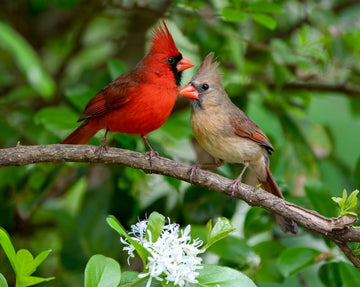
August 21, 2025
Top 12 Common Birds You Can Spot with a Bird Feeder Camera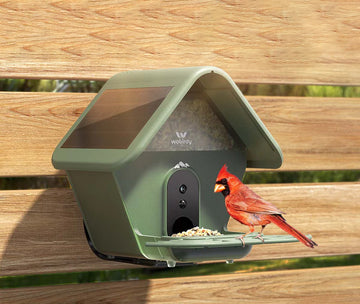
August 21, 2025
Smart Bird Feeder Buying Guide: Features That Really Matter